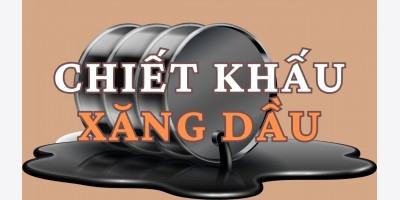Giá dầu thô của Mỹ không có biến Ä‘á»™ng
Giá dầu thô trong phiên châu Á sáng nay vẫn dáºm chân tại chá»— quanh mức 104 USD/thùng nhÆ° mấy ngày qua do chÆ°a nháºn được yếu tố há»— trợ nào để tăng giá, trong khi nhu cầu tiêu thụ ở quốc gia ngốn nhiên liệu nhiá»u nhất thế giá»›i lại giảm xuống mức thấp nhất bốn tháng qua.
Theo khảo sát của Bloomberg News, tồn kho dá»± trữ dầu của Mỹ sẽ chỉ tăng 1,5 triệu thùng trong tuần qua, nhÆ°ng thá»±c tế mà con số mà Bá»™ năng lượng công bố lại tăng 2,95 triệu thùng, nhÆ° váºy lượng tồn Ä‘ã được Ä‘iá»u chỉnh lên 355,7 triệu thùng. Tiêu thụ nhiên liệu cÅ©ng giảm xuống mức thấp nhất kể từ tháng 11, trong Ä‘ó tiêu thụ xăng giảm 2,1% so vá»›i cùng kỳ năm ngoái.
Jason Schenker, chủ tịch công ty cố vấn năng lượng Prestige Economics ở Texas nói, tình hình nguồn cung nhiên liệu ở Mỹ hiện rất dồi dào, nhÆ°ng nhu cầu tiêu thụ lại thấp hÆ¡n so vá»›i cách Ä‘ây má»™t năm, chứng tá» giá cao Ä‘ang hạn chế đối vá»›i nhu cầu. Vì váºy, thá»i gian tá»›i sẽ không lo thiếu nhiên liệu trong bối cảnh nguồn cung tại Libya có thể bị gián Ä‘oạn.
Äến 8h50 sáng nay (giá» Việt Nam), giá dầu thô WTI giao kỳ hạn tháng 05 Ä‘ang giao dịch ở mức 104,51 USD/thùng, tăng nhẹ so vá»›i chốt phiên giao dịch hôm qua.
Crude Oil Falls After U.S. Inventories Rise More Than Forecast
March 30 (Bloomberg) -- Crude oil dropped after a U.S. government report showed a larger-than-forecast gain in supplies as fuel demand declined to the lowest level in four months.
Oil fell 0.5 percent as inventories climbed 2.95 million barrels to 355.7 million last week, the Energy Department said. Stockpiles were forecast to rise by 1.5 million barrels, a Bloomberg News survey showed. Fuel demand dropped to the lowest level since November as gasoline consumption decreased to 2.1 percent less than a year ago.
“The U.S. market is very well supplied,” said Jason Schenker, president of Prestige Economics, an energy advisory firm in Austin, Texas. “Gasoline demand is now lower than it was a year ago, which may be a signal that higher prices are starting to hurt consumers.”
Crude oil for May delivery declined 52 cents to settle at $104.27 a barrel on the New York Mercantile Exchange. Futures are up 27 percent from a year ago.
Oil volume on the Nymex was 496,986 contracts as of 2:36 p.m. in New York. Volume totaled 448,466 contracts yesterday, 45 percent below the average of the past three months. Open interest was 1.52 million contracts.
“The lack of volume shows a real lack of commitment to bid the market in either direction,” said Addison Armstrong, director of market research at Tradition Energy in Stamford, Connecticut.
Range-Bound Market
Oil in New York has traded between $96.22 and $106.95 a barrel this month. Futures topped $106 three times since Feb. 28 before retreating.
“We’ve been trading at the same level for a while,” said Tim Evans, an energy analyst at Citi Futures Perspective in New York. “Prices have been close to $104 for a week. There’s not much to bid on as long as it stays at the same level.”
Inventories at Cushing, Oklahoma, the delivery point for New York-traded West Texas Intermediate crude, increased 1.69 million barrels, or 4.2 percent, to 41.9 million, the highest amount since the government began keeping records in 2004.
“The inventory numbers continue to show that the U.S. market is well supplied,” said Todd Horwitz, chief strategist at Adam Mesh Trading Group in New York. “There’s certainly no shortage of crude.”
Total fuel demand slipped 3.7 percent to 18.6 million barrels a day last week, the lowest level since Nov. 26, the department said. Gasoline consumption fell 2.3 percent to 8.87 million barrels a day, report showed.
Gasoline inventories slipped 2.68 million barrels to 217 million, the lowest level since December, according to the Energy Department. Stockpiles were forecast to drop 2 million barrels, the median of 15 analyst responses in the Bloomberg News survey.
Gasoline Prices
Gasoline for April delivery rose 1.82 cents, or 0.6 percent, to $3.064 a gallon in New York, the highest settlement since Aug. 27, 2008.
Regular gasoline at the pump, averaged nationwide, increased 0.8 cent to $3.595 a gallon yesterday, the highest level since Oct. 2, 2008, the AAA said on its website.
Oil has advanced 14 percent this year as unrest spread from Tunisia to Egypt, Libya, Yemen, Bahrain, Oman and Syria. Countries in the Middle East and North Africa accounted for 36 percent of global oil production and held 61 percent of proven reserves in 2009, according to BP Plc, which publishes its BP Statistical Review of World Energy each June.
“You can sum up the market in one phrase, fear of event risk,” said Richard Soultanian, co-president of NUS Consulting Group, a Park Ridge, New Jersey-based energy procurement adviser. “The U.S. is awash in oil. Prices should be much lower and would be if it weren’t for geopolitical risk.”
Libyan Conflict
Libyan rebels retreated under fire from Muammar Qaddafi’s troops as President Barack Obama and U.K. Prime Minister David Cameron said they may consider sending arms to the opposition forces. Insurgents, after advancing toward Qaddafi’s hometown of Sirte, withdrew in the face of artillery and rocket attacks as pro-Qaddafi forces retook control of the oil port of Ras Lanuf.
Oil output from Libya has dropped by about 1.3 million barrels a day to a “trickle” of its normal level since fighting between government troops and rebel forces forced companies to suspend operations and evacuate staff, the Paris- based International Energy Agency said this month.
“Some of the fear premium is being taken out of the oil market,” Horwitz said. “The top is in unless there is a major escalation in the Middle East.”
Brent oil for May settlement declined 3 cents to end the session at $115.13 a barrel on the London-based ICE Futures Europe exchange.
The European benchmark traded at a $10.86 premium over U.S futures. The difference between front-month contracts in London and New York surged to a record $19.54 on Feb. 21 as unrest spread in the Middle East and North Africa and stockpiles climbed at Cushing. The gap averaged 76 cents last year.
To contact the reporter on this story: Mark Shenk in New York at









